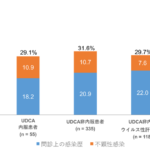2023-07-31 ワシントン大学セントルイス校
◆従来の脊髄刺激法は高額で手術が必要なため多くの患者には手の届かない存在でしたが、この新しい方法は手頃な価格であり、手術も必要ありません。さらに、研究チームは脊髄の特定の部位に電極を配置することで、特定の筋肉群を刺激することができるガイドラインを作成しました。これにより、リハビリテーションのシナリオにおいて、医療専門家が効果的な治療を行うことが可能となります。この新しい方法は、多くの患者に手頃な価格で利用できる脊髄刺激法の可能性を広げるものとして期待されています。
<関連情報>
- https://source.wustl.edu/2023/07/a-low-cost-potential-therapy-for-spinal-cord-injuries/
- https://iopscience.iop.org/article/10.1088/1741-2552/ace552
多電極構成による経皮的脊髄刺激の選択性の向上 Enhanced selectivity of transcutaneous spinal cord stimulation by multielectrode configuration
Noah Bryson, Lorenzo Lombardi, Rachel Hawthorn, Jie Fei, Rodolfo Keesey, J D Peiffer and Ismael Seáñez
Journal of Neural Engineering Published: 25 July 2023
DOI:10.1088/1741-2552/ace552

Abstract
Objective. Transcutaneous spinal cord stimulation (tSCS) has been gaining momentum as a non-invasive rehabilitation approach to restore movement to paralyzed muscles after spinal cord injury (SCI). However, its low selectivity limits the types of movements that can be enabled and, thus, its potential applications in rehabilitation. Approach. In this cross-over study design, we investigated whether muscle recruitment selectivity of individual muscles could be enhanced by multielectrode configurations of tSCS in 16 neurologically intact individuals. We hypothesized that due to the segmental innervation of lower limb muscles, we could identify muscle-specific optimal stimulation locations that would enable improved recruitment selectivity over conventional tSCS. We elicited leg muscle responses by delivering biphasic pulses of electrical stimulation to the lumbosacral enlargement using conventional and multielectrode tSCS. Results. Analysis of recruitment curve responses confirmed that multielectrode configurations could improve the rostrocaudal and lateral selectivity of tSCS. To investigate whether motor responses elicited by spatially selective tSCS were mediated by posterior root-muscle reflexes, each stimulation event was a paired pulse with a conditioning-test interval of 33.3 ms. Muscle responses to the second stimulation pulse were significantly suppressed, a characteristic of post-activation depression suggesting that spatially selective tSCS recruits proprioceptive fibers that reflexively activate muscle-specific motor neurons in the spinal cord. Moreover, the combination of leg muscle recruitment probability and segmental innervation maps revealed a stereotypical spinal activation map in congruence with each electrode’s position. Significance. Improvements in muscle recruitment selectivity could be essential for the effective translation into stimulation protocols that selectively enhance single-joint movements in neurorehabilitation.


